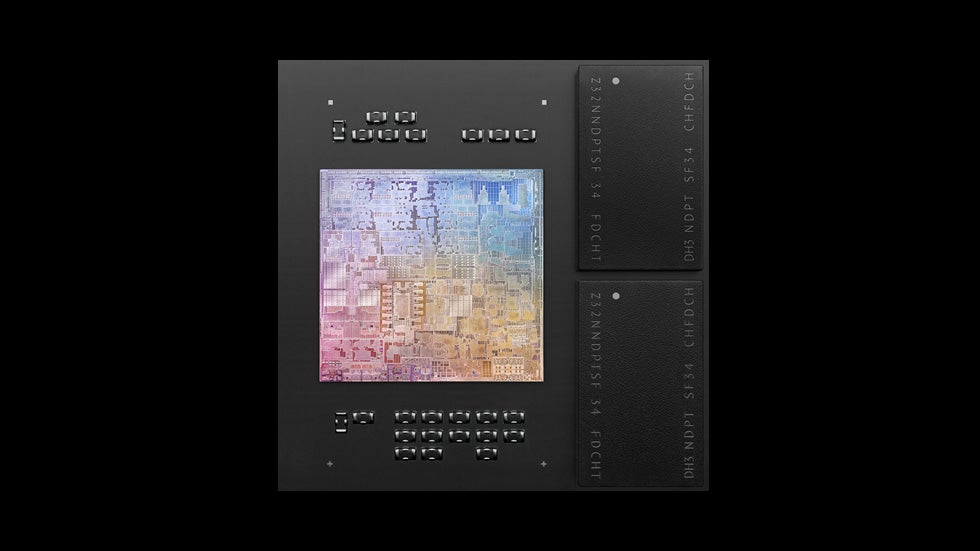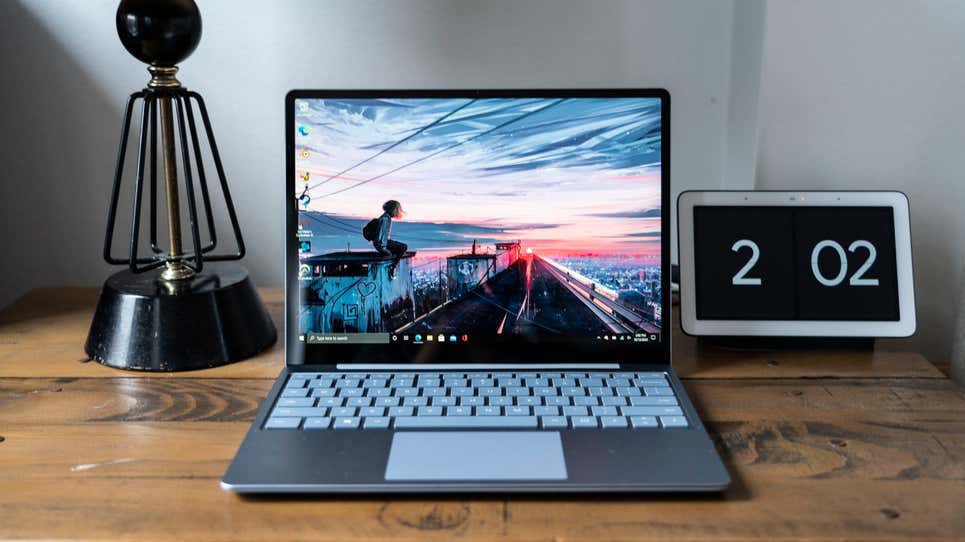Apple’s brand was built on high-end products but the company has shown in recent years a willingness to appeal to a wider audience by selling more affordable devices. One tactic Apple uses to keep the price down is to equip more budget-friendly models with older processors, an advantage only it enjoys thanks to the performance of its in-house chips.
Now that Apple is making its own M-series processors for Mac, it’s time we get an affordable MacBook. As it stands, the $US999 ($1,387) MacBook Air is the company’s least expensive option, but anyone who even sneezes at Google Chrome knows to spend another $US200 ($278) for the 16GB of RAM upgrade. That places Apple’s cheapest laptop firmly in what you might call the “premium laptop” category.
The ticket to enter Apple’s MacBook ecosystem is too high. If you need a device for work or class, your options today are to either pony up for a MacBook Air or fiddle around with an iPad until it looks something like a laptop. At the risk of igniting fiery debates with those who use a tablet as a primary device, I’m here to tell you that the second option isn’t ideal.
Completing a transition from PC and Android to Apple means buying a Mac, and right now, the options are too expensive unless you don’t mind being tethered to the Mac mini. People are knocking on Apple’s garden walls and soon, the company won’t have an excuse for not letting them in. Let me explain.
M-series chips change the equation
When the M1 chip arrived, it marked a transfer of power from Intel/AMD to Apple. With custom chips, Apple no longer has to rely on a third party for the component that lies at the heart of its Macs — a setup Tim Cook very much loathed.
Apple now has more control over the cost and manufacturing of its laptop chips, meaning it decides when to phase out a processor. My proposition to Apple is to either keep the M1 chip in the MacBook Air and lower the price (and only bring the M2 to the MacBook Pro 13) or release an entirely new budget-friendly notebook in a few years once the M1 is dropped from current products. Basically, I want Apple to use the same strategy it employs with its phones, tablets, and watches.

As I suggested above, nobody is going to complain about using an M1 processor in a few years from now when the Windows alternative is an Intel Pentium Gold or Core i3 chip. The longevity of Apple’s chips is evident: the $US329 ($457) iPad is the fastest tablet in its class despite using an A13 Bionic processor, the iPhone SE with the same SoC bests current flagship phones, and the Apple Watch SE makes it seem like Android wearables are all set two years in the past.
That a budget Mac could outperform others in its class assumes Apple prices this theoretical laptop aggressively, say, in the $US500 ($694)-$US600 ($833) range, and that Intel and AMD don’t have tricks up their sleeves (keep an eye on CES 2022 in January).
Filling a gap in the market
I’ve reviewed hundreds of laptops over the years, so I have a pretty good idea of what’s out there. Still, recommending a notebook to anyone with a sub-$US1,000 ($1,388) laptop isn’t as straightforward as you might think, especially when “not a Chromebook” is on their list of demands (and it usually is). HP’s Envys and Asus’s ZenBooks are a good place to start, and there are few IdeaPads, Aspires, and other blah lineups worth mentioning, but what’s missing is a “just buy the” product out there, like the XPS 13 or X1 Carbon in the premium segment
I’m no market analyst, but my instinct tells me a $US700 ($972) MacBook would sell like outrageously overpriced polishing cloths and could convince Windows users dizzied by the range of options available to them to just get a Mac. Before you call me part of the herd, the last Apple product I owned was an iPod Nano. However, after recently spending countless hours hunting down the best wireless earbuds for Android users, I’ve come to appreciate how convenient it is for Apple fans to upgrade their gear.

I can’t talk about Apple filling the “value laptop” void without mentioning Microsoft’s efforts. Perhaps the best example is the Surface Laptop Go, a 12.4-inch laptop that starts at $US549 ($762). It’s a decent option except that, um, the base model comes with 4GB of RAM and 64GB of eMMC storage. Obviously, you wouldn’t buy that one (tell me you wouldn’t buy that one), so you’re looking at $US700 ($972) for the mid-tier config. I don’t have Apple’s components receipt handy, but I do know that an M1 chip is much faster than Intel’s 10th Gen Core i5 CPU.
You could also buy a Chromebook but that isn’t much better (if at all) than getting an iPad (more on that below). Google’s OS has its place as a simple, web-based OS that can run on low-powered hardware, but it lacks support for many of the apps needed by professionals. If you just need something to get on the web, let me direct you to the Google Pixelbook Go.
Cutting cost
Using the M1 chip as old new stock in a few years could be one way to keep the price down. However, more compromises might be needed to create a large enough gap between the $US999 ($1,387) MacBook Air and what I’ll call the MacBook SE. For this, we turn to the design. Microsoft mixed some plastic into the aluminium chassis of the Surface Laptop Go, but I’m not convinced Apple would ever stray from unibody aluminium, a signature of MacBooks for as long as they’ve been around.
One option would be to downsize, a move that could be as straightforward as bringing back the 12-inch MacBook. Yes, that laptop cost more than the MacBook Air, but that’s because it had a Retina display (when the Air didn’t) and a more modern design. If it were released today with the same chassis, the MacBook would just be a smaller version of the Air.

Recycling the M1 chip would resolve one of the 12-inch MacBook’s biggest shortcomings in that it used inferior m-series Intel chips. Apple’s M chips are mightier than even the Core i5 and Core i7 processors available in the most recent version of that now-extinct notebook. Furthermore, the M1 chip is more efficient, meaning longer battery life and, crucially for a laptop this thin, the ability to operate at a high level without a fan.
An alternative to resurrecting the MacBook would be to reintroduce a smaller MacBook Air. Remember, not long ago, the Air was offered in 11-inch and 13-inch flavours. The former might be too small today, but a 12-inch model could be a nice pairing with a 14-inch MacBook Air as a more portable, simplified (and cheaper) version.
What about the iPad?
The iPad Air is a tablet, not a laptop, and I don’t want to hear your argument. OK, fine, I won’t just leave it at that. The main issue here is iPadOS. Some nice productivity features have been added since Apple broke its tablet OS away from iOS, but these are baby steps toward a desktop experience. Multitasking is still awkward, mouse and touchpad support has its limits, and many productivity apps, like the Adobe suite or Apple’s own Final Cut, are either absent or watered down.
Look, this is a contentious topic among tech journos, and while I might not think tablets make for good laptop replacements, some folks do. But even if Apple commits to making iPadOS more like macOS, there still isn’t an option for people on a budget.
If you look at Apple’s current lineup, the cheapest tablet that could realistically function as a laptop replacement is the iPad Air, and it starts at $US599 ($832) without the $US300 ($416) Magic Keyboard needed to convert it into a laptop of sorts (don’t bother with the Smart Keyboard). So now you’re at $US900 ($1,249), just shy of MacBook Air pricing. The iPad mini, as cute as it looks and as fun as it is to carry around in your palm, is too damn small, and the cheap iPad is a relic at this point.
What does a MacBook SE look like?
I already have it drawn out in my head. First, colours. More of them! I’d love it if Apple gave any of its laptops the iMac treatment by offering its laptops in fun shades. Go ahead and call Apple fans sheep, most i-gadget-touting folks I’ve spoken to would welcome something bolder than silver and grey.
As for the internals, well, give me the M1 processor — a chip at the top of its game today that will still be a powerful option in a few years’ time after the inevitable M2 and M3 arrive. Where I wouldn’t compromise is on RAM and storage, which should be a minimum of 8GB and 128GB, respectively, though I wouldn’t mind if Apple used slower, less expensive components. Oh, and I think we can all agree that one USB-C port doesn’t cut it, so let’s just add a second one for good measure.
I touched on display size before, but I really think 11 inches is too small and 13 inches is already taken. Twelve would be a fine middle ground, especially if Apple goes with a taller aspect ratio. And that’s pretty much it. No need to add anything else to a product that would appeal to those who just want a fast laptop that gets the job done (and runs all the programs you need it to).
So long as Apple doesn’t screw around with the keyboard, a basic $US700 ($972) MacBook with the specs outlined above would, in my eyes, be a massive success, and a large landing pad for PC users whose sub-$US1,000 ($1,388) options are so often compromised.
